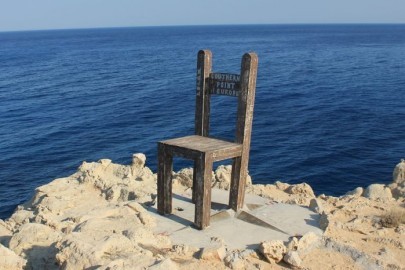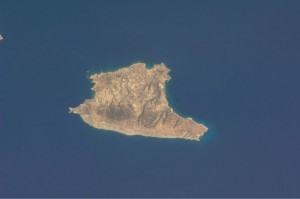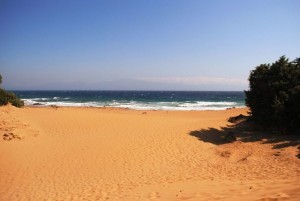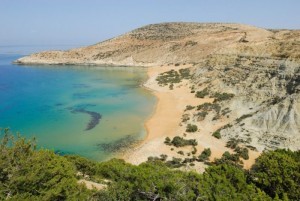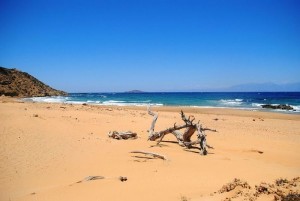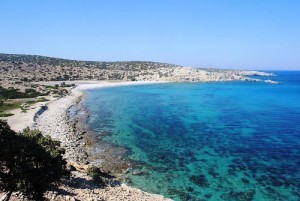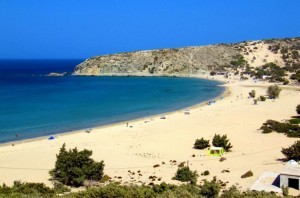Described by Homer as the place where Odysseus shipwrecked on his way back from Troy, Gavdos is a remote island located 45 km (28 miles) from the southern coast of Crete. Closer to Africa than to Athens.
It was on Gavdos that the hero was rescued by Calypso, the island’s goddess, who held him prisoner for seven years.
Gavdos lies in the Libyan Sea and it is known for being the southernmost portion of land in Europe. The island is 9 km long and 4.5 km wide. There is no fresh water and the locals collect rainwater to drink. Likewise, the energy on the island is obtained by generators, often shut at night.
Worth mentioning is the capital of Gavdos; Kastri, the port; Karabe, and a few more villages, Ambelos and Vatsiana.
Archeological findings brought light to the fact that the island has been inhabited for over 3,000 years before the beginning of our era.
Over the years, Gavdos received different names, it was called Cavdos, Clavdos, and Clauda, and the Venetians used to call it Gotzo. Under the Venetian rule, the island was abandoned, as pirates used to seek refuge there. In 1539, Barbarosa used it as a hideaway.
Roman and Byzantine traces are still visible in some areas of the island, especially in the north.
The Landscape of Gavdos
The island is abundant in cedar trees as well as pine trees, plenty of sand dunes, and shrubs. Rainfall is scarce all over the year but it still manages to maintain a rather green scenario.
A few streams and rivers can be found on Gavdos during the colder months since due to its hot weather, their courses are normally dry in Summer when the average temperatures easily reach 40 °C (104 °F).
The highest point on the island is 345 meters above the sea and there are far less than 100 inhabitants living permanently. However, and despite the small population, the island still has a post office, a doctor, and a policeman!
The wild landscape, accompanied by the occasional goat, give the island a mysterious atmosphere and a kind of lost paradise. thanks to its heavenly beaches. Among the most popular ones are Sarakinikos, Agios Ioannis, and Korfos. The most famous beach of Gavdos which lies in the south is Tripiti.
Tripiti is famous for its bizarre rock formations which sometimes form arcades in the sea. The name Tripiti comes from the Greek tripa (hole), name as such due to the three arches diving into the sea.
A chair has been place on top of a rock formation there, indicating that Tripiti is the southern most point of Europe.
Potamos is a stunning beach with reddish sand, locate in the north-west part of Gavdos. Visitors can reach Potamos by boat or by foot.
Agios Ioannis, chosen as the second most beautiful beach in the world by the Travel Channel in 2007, is a solitary spot. There are no places to stay in the area, however there are impressive caves and it is often favorite spot for the naturist tourist.
How to reach Gavdos
There is a ferry service almost every day, depending on the weather. A boat covers the route Chora Sfakion – Gavdos in about two and half hours. There are also boat services departing from Paleochora and Sougia, in the south of Crete. In the winter there is only one ferry a week, which is often delayed due to bad weather.
Source: Gabi Ancarola/greekreporter
Ask me anything
Explore related questions
